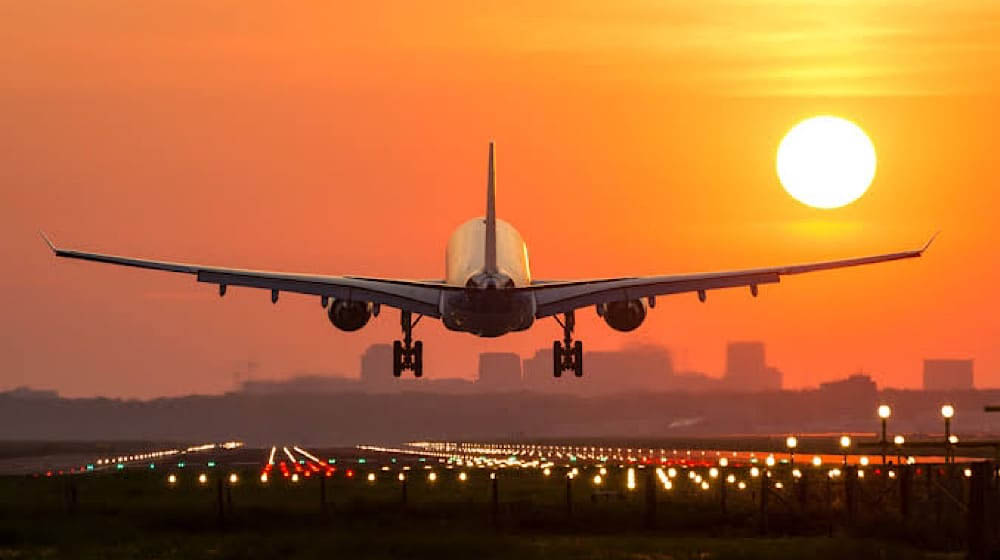 Log in
Log in

In a major move for international travel and Pakistan's aviation sector, Pakistan International Airlines (PIA) has brought back its services to Gulf countries which saw a short term stoppage because of raised issues in the Middle East. Also on June 24, 2025 PIA got back in the game as reports of a ceasefire came in and the regional air space restrictions were removed.
This article looks at the past of the suspension, reports on the present state of flight ops, brings to light passenger issues, and looks at what to expect for PIA and the air travel in the region.
PIA which stands for Pakistan International Airlines put on hold all of its flights to the Gulf countries which at the time included the United Arab Emirates, Saudi Arabia, Qatar, Bahrain, and Kuwait which saw an up and down in the regional conflict between Iran and Israel. At one point the situation broke out into open hostilities which saw Iran fire at U.S. military bases in Qatar which in turn made many Gulf states to close off their airspace as a preventive measure.
PIA along with many other international carriers in that area had no other option but to ground their scheduled flights for passenger safety. We saw dozens of flights and thousands of passengers which included business, family and religious travelers affected by this during the peak summer travel season.
On June 24, 2025 the U.S. facilitated a ceasefire between Iran and Israel which in turn reduced tensions and saw Gulf states open up their air space. After this diplomatic success PIA reported the return of flight services to all former cancelled destinations.
1500 hours Pakistan Standard Time.
PIA put out a report on which flights have returned to service and their updated status. Many of them were delayed because of past cancellations and aircraft repositioning issues. Here is a report which details the key routes that saw a return to service.
| Origin | Destination | Flight No. | Delay Duration |
|---|---|---|---|
| Islamabad | Dammam | PK-245 | 15 hours |
| Karachi | Madinah | PK-743 | 14.5 hours |
| Lahore | Madinah | PK-713 | 7 hours |
| Sialkot | Sharjah | PK-209 | 15 hours |
| Multan | Dubai | PK-221 | On time |
| Sialkot | Doha | PK-251 | On time |
| Karachi | Jeddah | PK-761 | On time |
| Islamabad | Abu Dhabi | PK-261 | On time |
In the case of the flights there was delay which grew in time due to rerouting, operational backlogs, and security clearance which came into play after the air space closures.
Passengers had a range of responses to the issue. Many were frustrated by delays and in the lack of info beforehand, but also some passed on the airline’s quick action once things got back to normal. PIA issued public apologies and reported to have travelers stay tuned to official info which included the airline’s site, social media and call center.
Airlines put in time and effort to rebook passengers and waive change fees which were applicable to them. We saw an increase in the agent’s activity as they worked beyond normal hours to help passengers.
In what is perhaps the most publicized humanitarian effort of the time PIA organized special charter flights for Pakistani citizens that were left behind in Iran and Turkmenistan due to air space issues. We had a report of a flight which took off from Peshawar to Ashgabat to get those travelers which were caught in the middle.
This project saw PIA transform into a model of adaptability in emergency situations and also to that of a supporter of citizens in times of crisis.
PIA did not stand alone in its decision to suspend and then resume operations. Large international carriers such as Emirates, Qatar Airways, Etihad Airways, and Air India put some flights on hold or changed routes to stay away from conflict zones. Once the ceasefire was reported, most airlines got back to their regular schedule which marked a return to normal in Middle Eastern air routes.
Air travel is seeing a shift toward very quick changes in flight paths which in turn is a part of a larger trend of airlines which have become more flexible in their response to world events, with at present moment we see in near real time changes to routes which is the new strategy in global aviation.
This issue brought to light the value of a strong crisis management plan. PIA’s return to flight and emergency charter services is progress, but we see room for improvement in terms of customer communication and operational flexibility.
Gulf airspace is what PIA has to use which in turn makes them vulnerable to regional conflicts. We see that PIA may put in place alternative routes and also form new international partnerships which will in turn reduce those risks going forward.
The 24 hour suspension brought about confusion from travelers. Going forward we may see real time notifications via SMS, email, and mobile apps which will in turn improve the customer experience during unexpected disruptions.
PIA is improving their image by quickly getting back to flight operations and reaching out to affected passengers which in turn will better their public image greatly if they also prove to be reliable during global crises.
Flight disruptions always occur at a cost. In PIA’s case the losses were large which included:
However the airline’s quick recovery which we saw helped to minimize long term financial damage. During volatile times what Pakistan’s airlines do to maintain international connectivity is of great importance not only for economic reasons but also in terms of restoring and maintaining global trust in our aviation sector.
With the PIA flights back on schedule we have that:
PIA will also be very much at watch regarding this issue and will adjust our operations as the security climate changes.
PIA’s ability to resume its Gulf operations swiftly after the Iran-Israel ceasefire reflects both operational resilience and a growing adaptability to global geopolitical risks. While the temporary suspension disrupted travel plans for many, the airline's response demonstrated a commitment to safety, strategic recovery, and humanitarian support.
As regional tensions continue to ebb and flow, airlines like PIA must invest in long-term crisis management, route diversification, and enhanced communication strategies. For passengers, the key takeaway is preparedness—whether it's for delays, reroutes, or sudden cancellations, flexibility is now part of the travel experience.
PIA’s return to the skies of the Gulf is not just a restoration of flights—it's a signal that, even amid chaos, international connectivity can be restored with responsibility and resolve.



